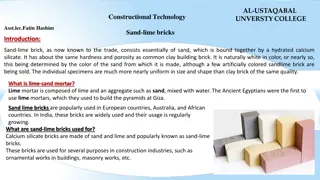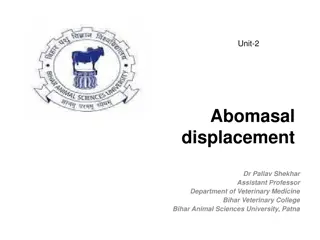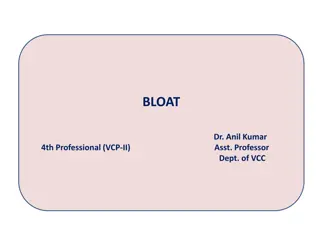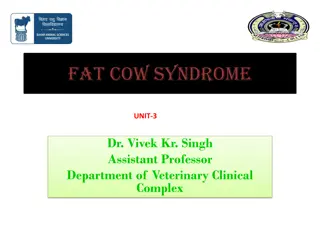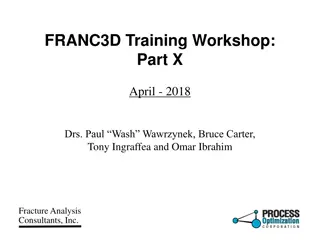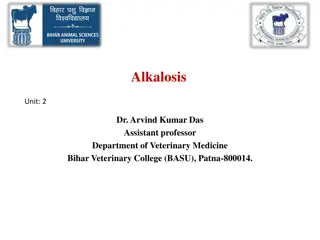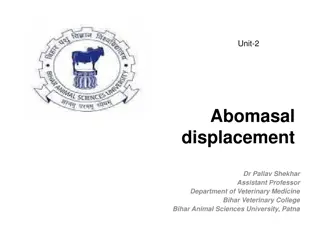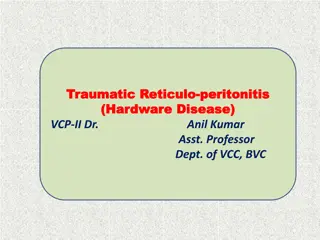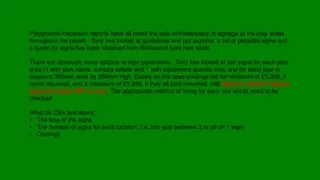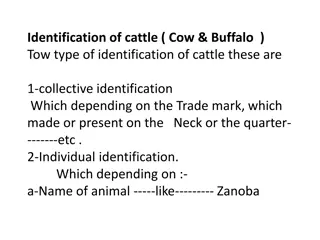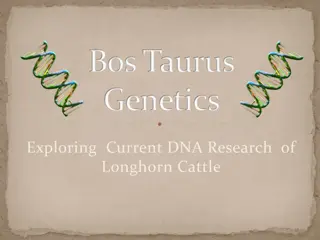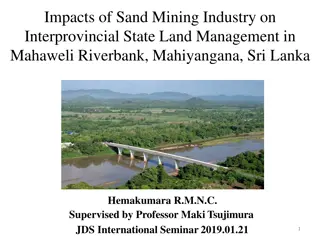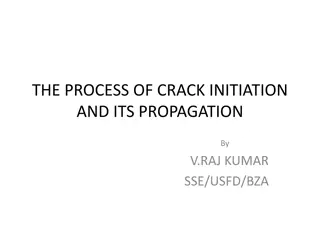Understanding Sand Crack in Cattle Hooves: Causes, Signs, and Treatment
Sand crack, a fissure of the horny wall in cattle hooves, can present transversely or longitudinally. It commonly affects dairy breeds and is predisposed by various factors such as overgrowth of digital horn and chronic laminitis. Diagnosis and treatment differ based on the form of the crack, with strategies including trimming, cleansing, antibiotic treatment, and rest. Prognosis varies, with vertical fissures having a guarded outlook. Regular foot trimming and preventive measures are key to managing sand crack in cattle.
Download Presentation

Please find below an Image/Link to download the presentation.
The content on the website is provided AS IS for your information and personal use only. It may not be sold, licensed, or shared on other websites without obtaining consent from the author. Download presentation by click this link. If you encounter any issues during the download, it is possible that the publisher has removed the file from their server.
E N D
Presentation Transcript
SAND CRACK UNIT-VI Dr. Mithilesh Kumar Assistant Professor cum Jr. Scientist Department Surgery and Radiology Bihar Veterinary College, Patna-800014
Definition: fissure of horny wall parallel to dorsal wall or parallel to coronet. An uncommon form is an axial wall crack. Incidence: low in dairy breeds. Predisposition: transverse form predisposed by overgrowth of digital horn and severe chronic laminitic horn rings. Longitudinal form predisposed by dry environment, trauma at coronary band.
Signs: transverse form usually cosmetic blemish only, no lameness single claw form indicates local stress; multiple claws (e.g. all eight) indicates systemic insult e.g. parturition, diet change, altered environment pododerm rarely exposed longitudinal form may be gross and involve whole length of coronet to bearing surface
in other longitudinal cases diagnosis is difficult when fissure is limited to small and extremely painful coronary lesion, which is partly obscured by hairs. Such cases have severe trauma to pododerm and early entry of infection. axial wall fissure is also hard to identify and can extend to coronary band causing severe pain.
Treatment transverse form: pare distal section of horn, especially when it forms hinge with more proximal portion and can cause pain on underlying laminae when flexed upwards: shorten toe and bearing surface to avoid movement of fractured portion longitudinal form: remove any excessive granulation tissue (pododerm) protruding through sandcrack
cleanse well, local astringent, local antibiotic spray, bandage and rest, possibly with block on adjacent claw especially with painful involvement of coronary band in severe case clean fissure well with grinder or Dremel drill, drill hole at proximal end of crack and fill with resin, and block other digit Guarded prognosis in vertical fissures. Prophylaxis Regular foot trimming, use of oils on at-risk cattle in dry environment.
Hoof deformities, overgrowth and corrective foot trimming Hoof deformities, overgrowth and corrective foot trimming Hoof deformities may be inherited, or acquired as a result of insufficient wear, or claw diseases such as laminitis. based on: length of dorsal hoof wall from coronet to toe (measured with pair of commercial dividers) angle of dorsal wall to ground (protractor) heel depth (pair of dividers) (see Figure 7.10)
It was found that: cows surviving for three or four lactations had shorter hooves and steeper angles than non-survivors, based on measurements made during the first lactation heritability of hoof length, employing sire comparisons, increased from first to fourth lactation increases in milk yield from first to second lactation were greater in cows with short, large-angled hooves in the first lactation
first lactation cows with above features had shorter calving to conception interval following the second lactation high yielding cows tend to have longer and lower-angled hooves after their second parturition calving to conception interval within the same lactation was greater in cows with longer, smaller-angled hooves than in those with shorter, steeper-angled hooves.


